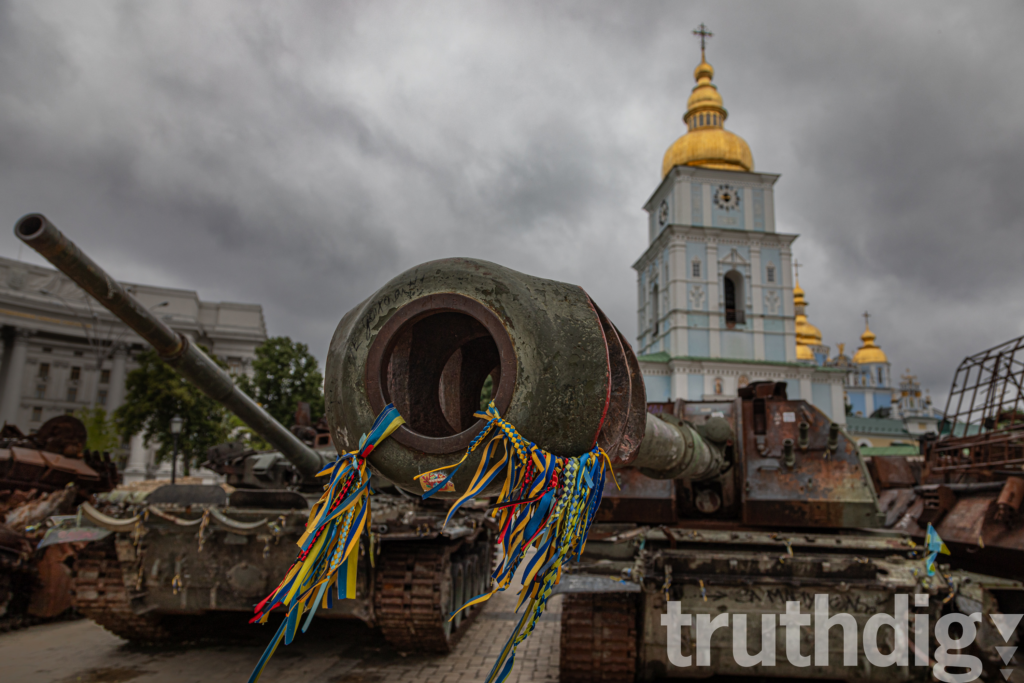 TD Original
TD Original
Photo Essay: Repurposed for War
Michael Nigro / Truthdig August 20, 2023 In Ukraine, a photojournalist sees soldiers and civilians maneuvering through the ruins. 13 photos-
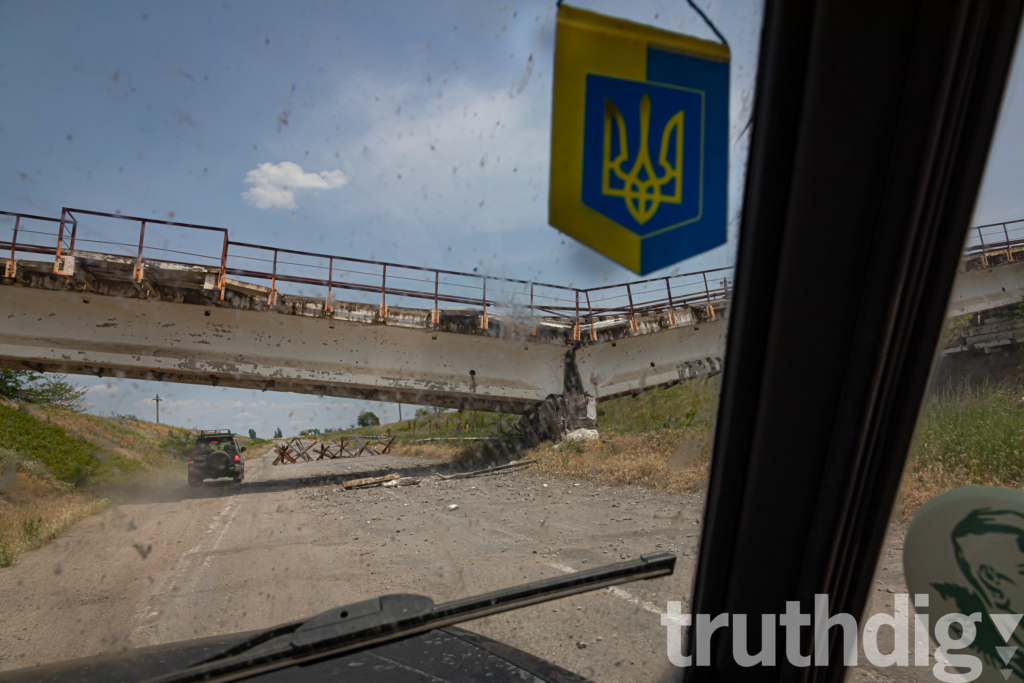
Getting close to the frontline in Ukraine has become increasingly difficult for journalists. Ukrainian officials have been controlling access points and, with greater frequency, revoking press credentials. On the day Russia destroyed the Nova Kakhovka dam in the Kherson region of Ukraine, I was stopped at a checkpoint at the city’s entrance and denied entry. Humanitarian groups and volunteers were let through, however. Thankfully, some journalists were already in the city and were able to report what was happening in the aftermath. The next day I was able to finagle my way in, but even then access was difficult all around the city.
-
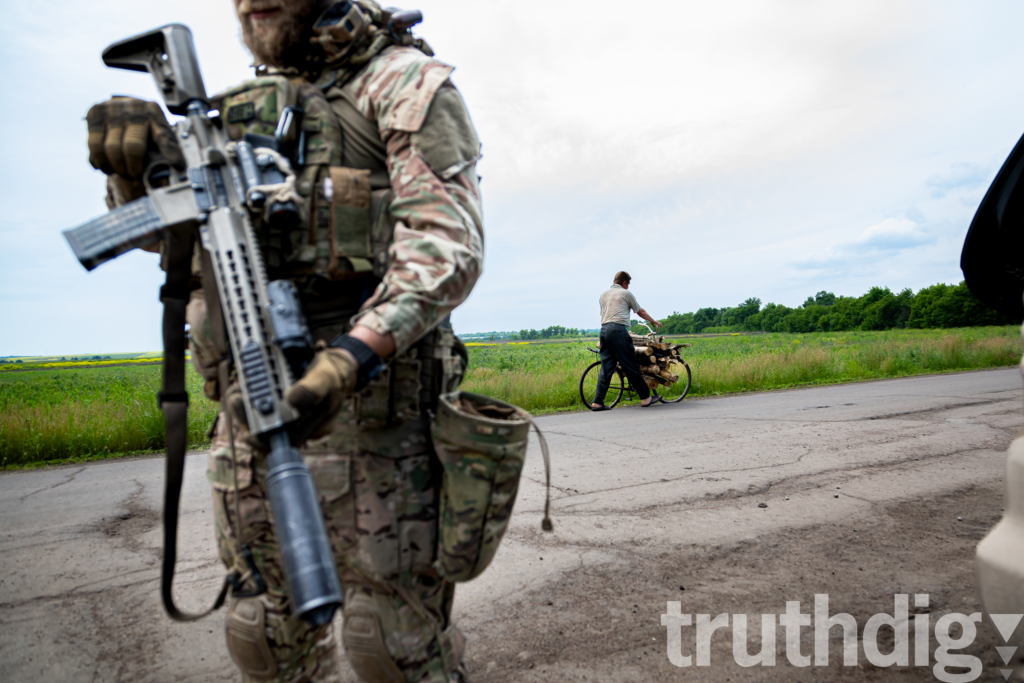
One kilometer from “zero line,” what soldiers call the very edge of the front, a civilian uses a bicycle to cart firewood past a special operations soldier while an artillery engagement is ongoing, in Vuhledar, Ukraine. After pushing the Russian forces out of the destroyed city of Vuhledar earlier this year, the Ukrainian forces have, for weeks, engaged in trench warfare, massive give-and-take artillery, mortar and drone bombardments, as their counteroffensive continues.
-
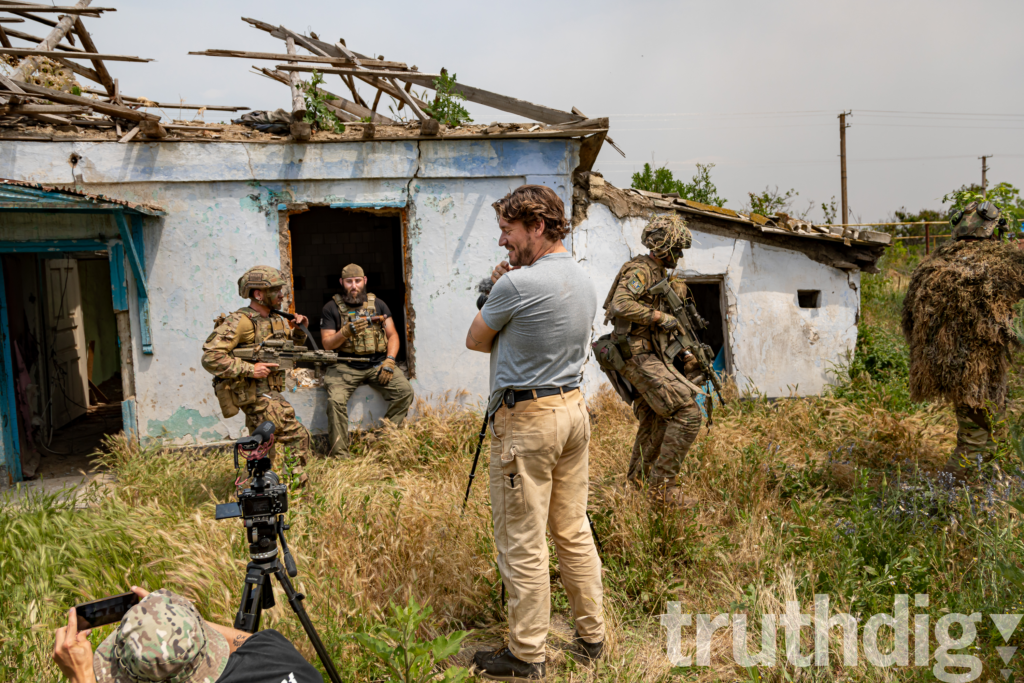
The few remaining locals in the village of Posad-Pokrovske will tell you that the small town sacrificed itself to save the larger port city of Mykolaiv. Ukrainian soldiers fought fierce battles here and were pounded by Russian shells for months but eventually repelled the attack and, in turn, made a move to liberate parts of Kherson Oblast. The entire village is now in ruins. There’s no water. Gas and electricity are scant. Portions of the village are occasionally used by the Ukrainian military, where new recruits learn Close Quarters Battle (CQB) tactics. For an entire morning, I was permitted to observe the 131st Reconnaissance Unit maneuver through the ruins. The soldiers are quite aware of the vast swaths of mines left behind by retreating Russian forces, which are cordoned off. There is also a smattering of civilians who remain or have returned. It is surreal to witness a babushka balancing jugs of water while pedaling a bicycle calmly through the training sessions, where snipers in ghillie suits dart past them across the road, only to disappear into the neglected undergrowth. And then there is this moment redolent of a scene in Stanley Kubrick’s 1986, Vietnam film “Full Metal Jacket,” except here, instead of a news crew interviewing soldiers during a firefight, Ukrainian soldiers pass through a documentarian’s interview, as if it’s normal and simply part of the training.
-
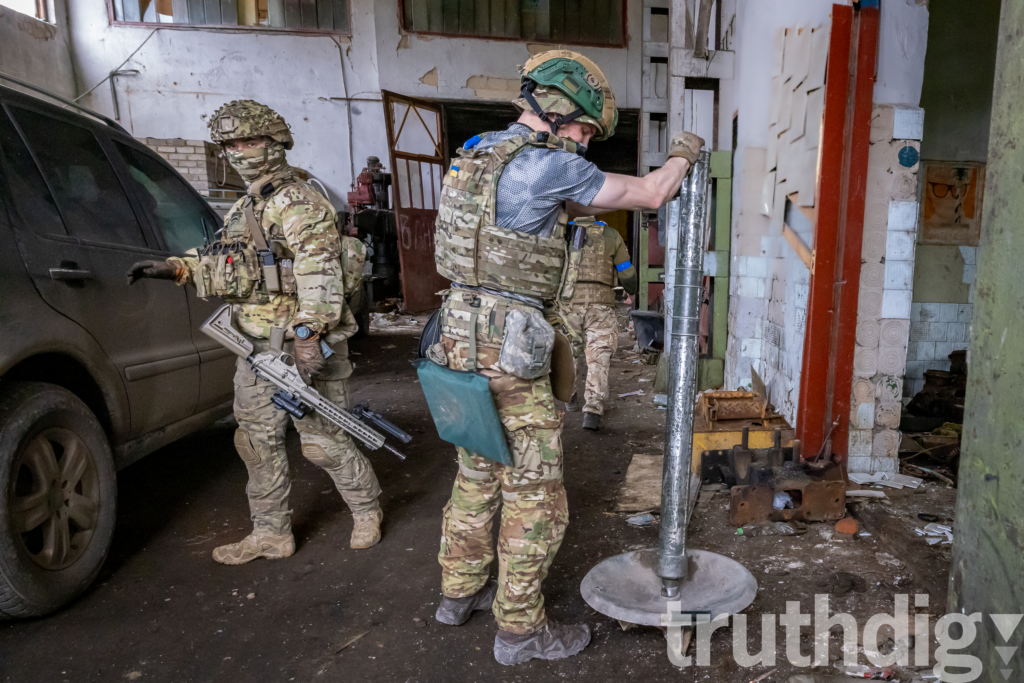
A Ukrainian special operations team assembles a mortar launcher in an abandoned building one kilometer from the frontline. None of the soldiers wished to have their faces shown or gave their full names.
-
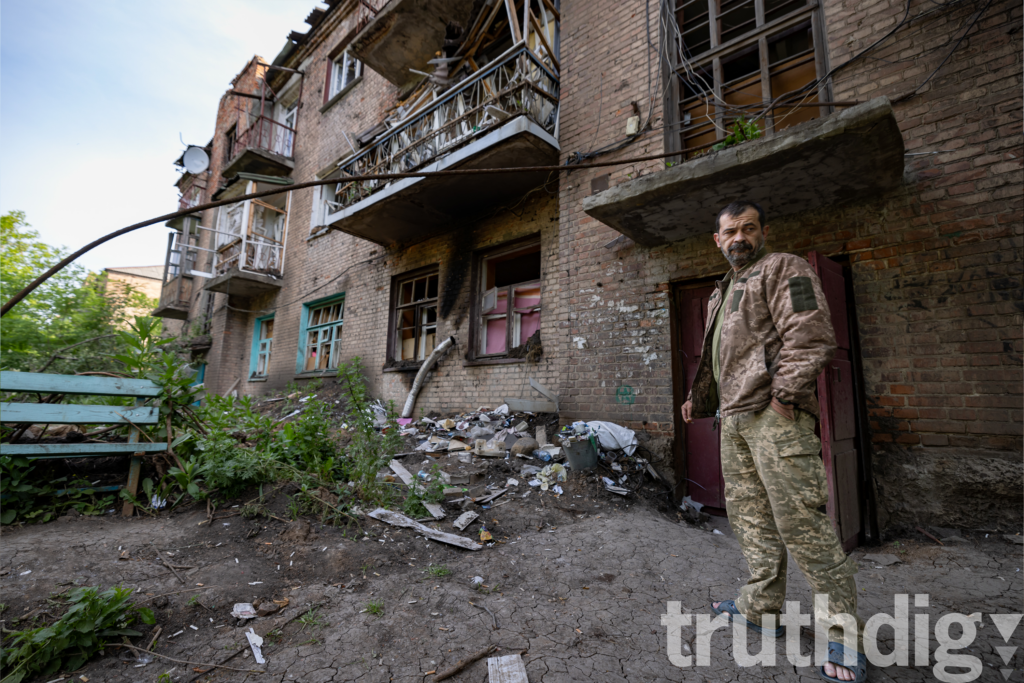
A Ukrainian soldier smokes outside a damaged residential building just outside the city center of the nearly empty town of Charsiv Yar. The town is a mere 10 miles from the city of Bakhmut, where Russian forces lost tens of thousands of soldiers, many of them mercenaries from the Wagner Group. Reports that 99% of the residential buildings and 80% of the houses are damaged or destroyed in Chasiv Yar is not overstating the matter. Nothing seems untouched from the shelling this town has endured since the war started. The city was once home to roughly 12,000 people and of the less than approximately 1000 residents who remain, I saw two during my brief stint there. Both were elderly women filling water containers at what seemed to be, amongst the mounds of garbage and jagged rubble, a thrown-together community aid station. The soldiers in Chasiv Yar were more visible. Some drove hell-bent and lead-footed on the decimated roads, and others moved supplies, like assembly line workers, from trunks of cars into partially destroyed buildings. Seemingly, everyone has been inured to the sporadic concussions of outgoing mortar fire being heaved into Russian-occupied Bakhmut.
-
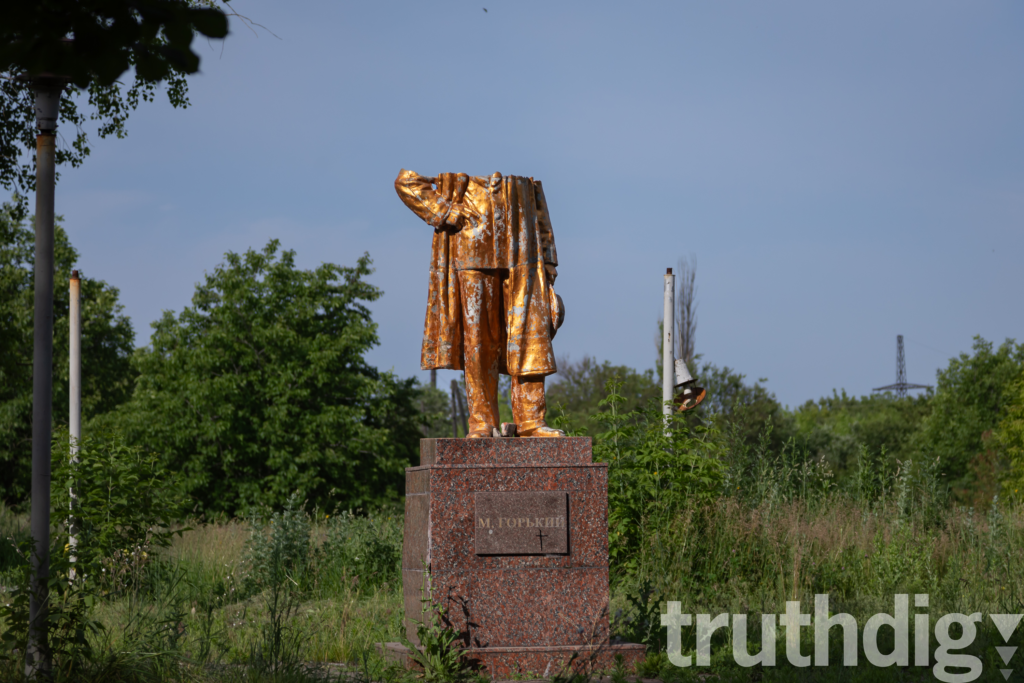
Near the city center of Chasiv Yar, in an overgrown children’s playground, a headless statue of the famed Russian writer Maxim Gorky remains. At first glance, it looks like an optical illusion. Intentional beheading or the result of the incessant Russian artillery barrages of the city, the jagged effigy cuts a stark anti-Russian declaration into the city’s destroyed landscape.
-
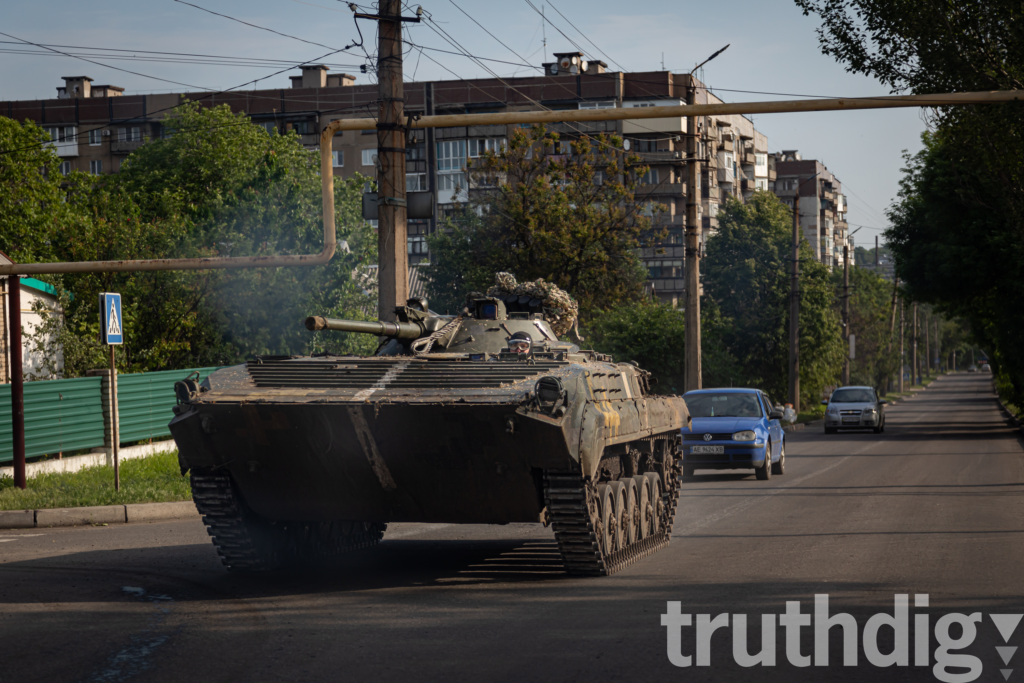
The stereotypical war imagery of columns of tan humvees or army green tanks clogging miles of roads and mustering to the frontlines does not exist in Ukraine. What you may see instead is a handful of armored vehicles moving or being transported at random. This shot was taken during “rush hour” about 25 miles outside of Bahkmut, which once had a population of about 70,000 people, and was the site of fierce fighting in the bloodiest battle since Russia invaded Ukraine in February 2022.
-
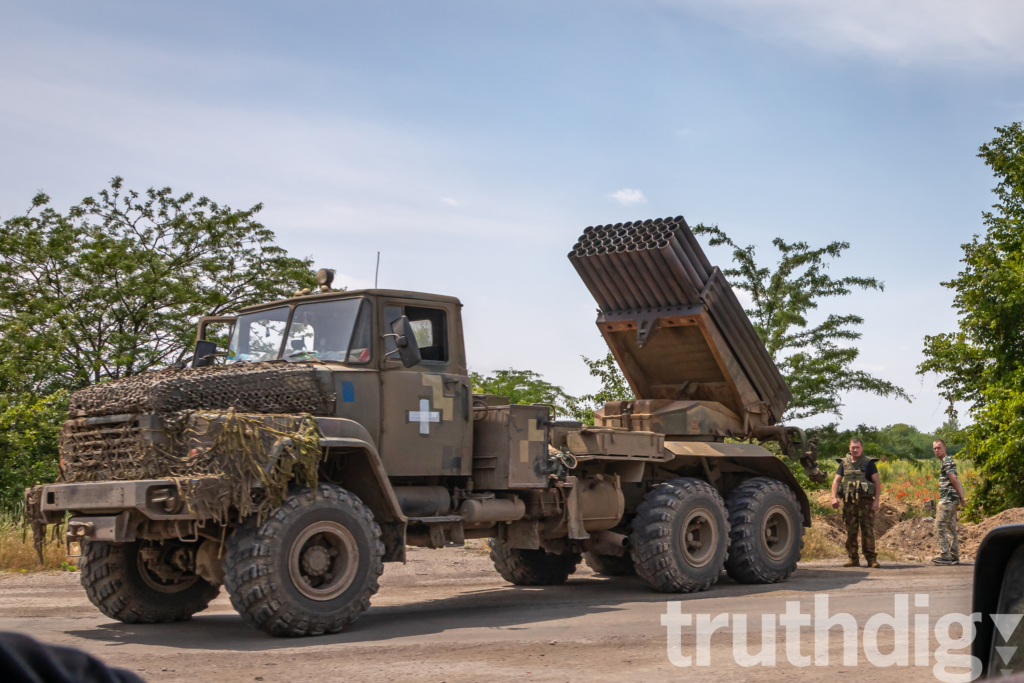
Western-made arms have traveled to Ukraine’s frontlines. Here, Ukrainian soldiers stand by a truck-mounted multiple rocket launcher pointed toward Russian forces, who have been dug in on the eastern side of the Dnipro River since being driven out of the southern city of Kherson in November 2022.
-
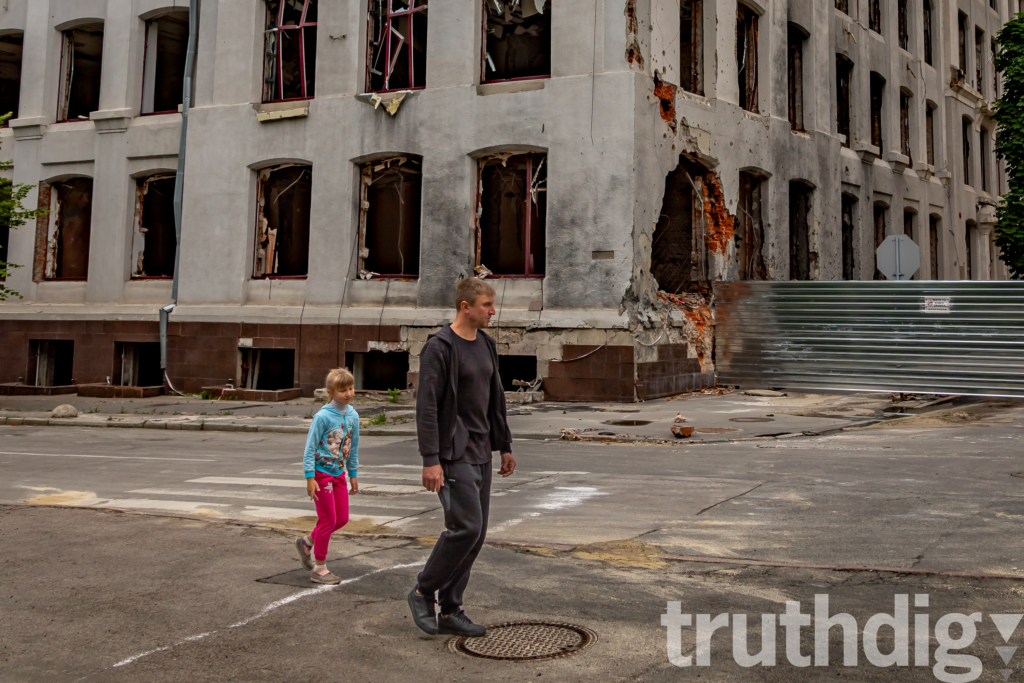
A father and his daughter walk past the ruins of the police station in Kharkiv, Ukraine, which was destroyed during the shelling of the city during one of the many battles for the strategic territory. The city of Kharkiv, the second largest city in Ukraine, is located just 20 miles from the Russian-Ukraine border and parts of the city have swapped control numerous times since the war began in February 2022.
-
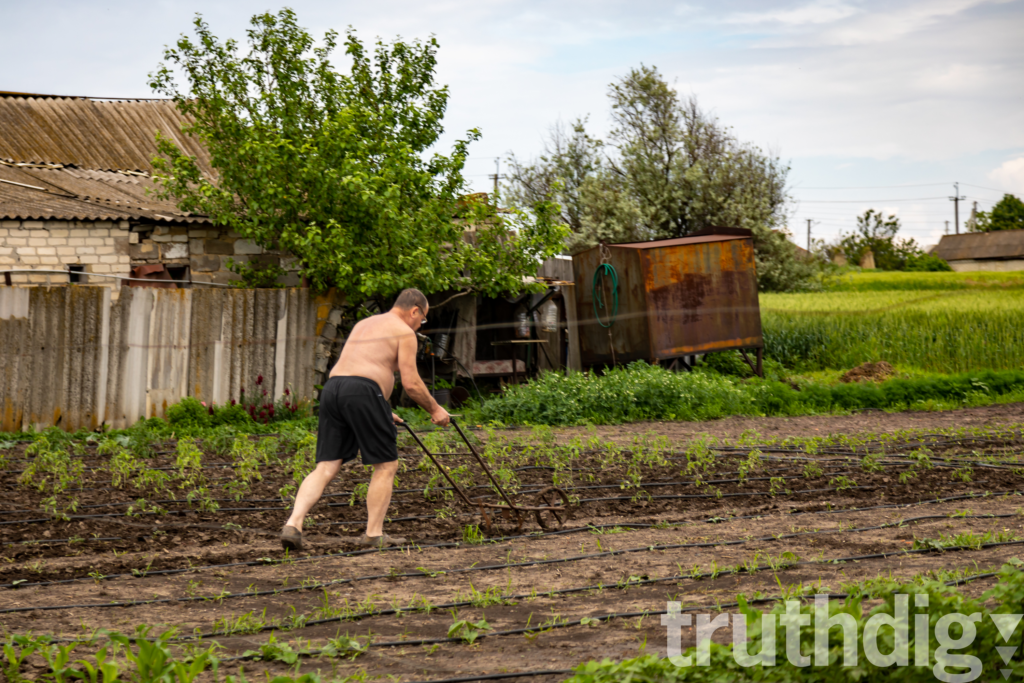
A shirtless man tills his vegetable garden two miles from the frontline in the Donbas region of Ukraine. With supply lines disrupted throughout the country, many Ukrainians, especially in small villages and towns, rely heavily on growing their own food for survival.
-
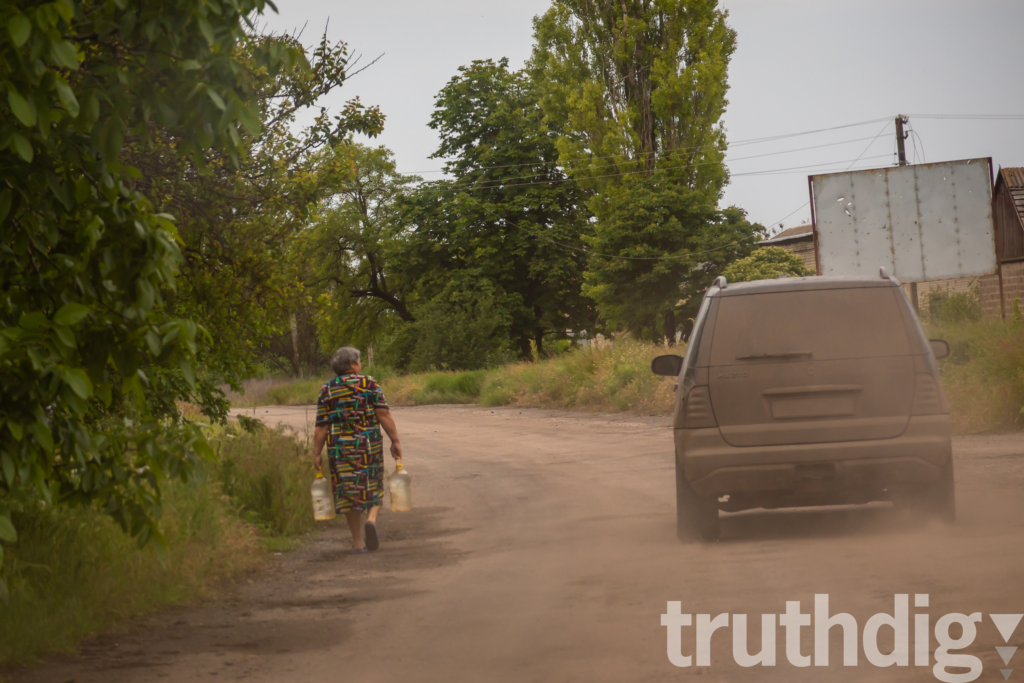
In Ukraine, especially in the Donbas, you see civilian vehicles — Toyotas, Ford SUVs, Sprinter vans, pickup trucks — all repurposed for war. They are often painted with camo designs and marked appropriately for specific military units. Others are simply personal vehicles — Nissans, Kias, Renaults. Here, a special forces unit driving an ML270 Mercedes Benz, which had been painted army green and its windows blacked out, drives past a babushka carrying water near the frontline city of Vuhledar.
-
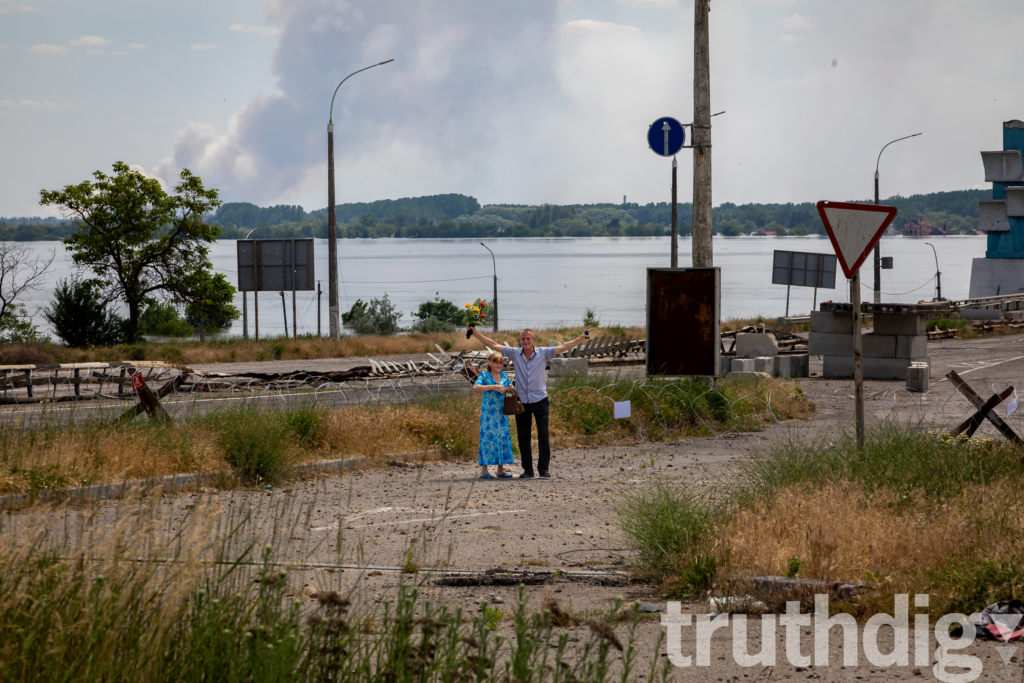
The day after Russia destroyed the Nova Kakhovka dam in the Kherson region of Ukraine on June 6, 2023, two elderly people risk crossing through a mined area at the mouth of the Antonivsky Bridge. That bridge became a flashpoint in the early days of the war and changed hands several times during the Battle of Kherson in February 2022. Russian forces at first wanted to establish a path from Russian-held Crimea into central Ukraine, but the bridge became a nexus of vulnerability and was reportedly destroyed by the Russians as they retreated in November 2022. The plumes of smoke in the distance come from the Russian-occupied side of the Oblast, a result of continuous outgoing Ukraine artillery strikes.
-
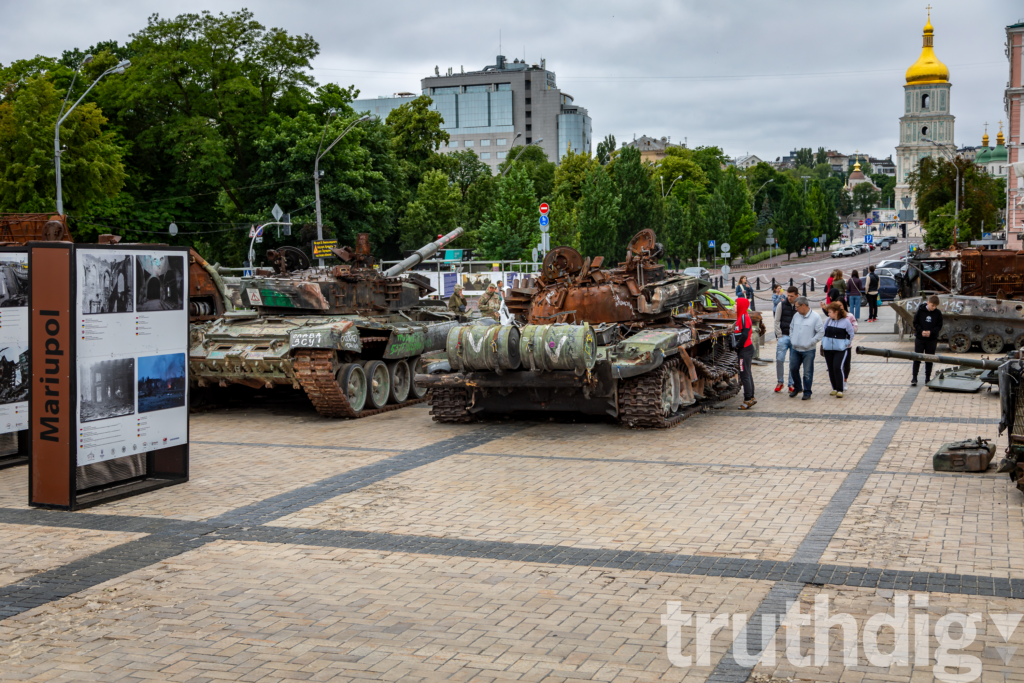
Beneath one of Kyiv’s most revered sites, St. Michael’s Monastery, an exhibit of Ukrainian defiance has been created. Filling the plaza beneath the church’s golden domes, sit dozens of burnt-out and blown-up Russian armored vehicles. People in Kyiv observe and take selfies in front of the war wreckage. Some tag the twisted metal with pro-Ukrainian/anti-Russian graffiti and, like on the muzzle of this tank, tie Ukrainian solidarity bracelets.

